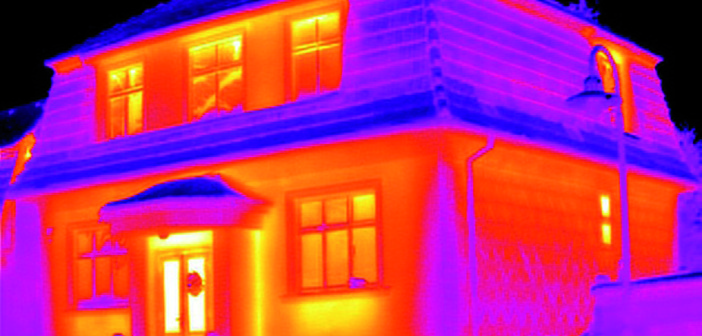Thermal imaging technology is especially useful for identifying leaks in pipes, pressure vessels, buildings and facilities. The technology involves sensing temperature differences. Temperature – or thermal – sensing provides a wide range of useful scientific and safety information. Thermal energy is emitted (radiated) by all objects – you can sometimes feel this energy as actual heat. In fact vipers hunt in the thermal infrared using heat sensitive pits located below their eyes.
There are many applications for thermal imaging. Uses of thermal imagery for leak detection include:
Industrial Applications
Thermal detection has historically been a safety technology. When high pressure process systems fail catastrophic accidents can occur. Good safety processes include thermal surveillance to find potential failures and active leaks, preventing accidents. From hot spots to vapor plumes leaks are readily seen with thermal imaging. Thermal pictures provide compelling evidence to justify costs of unscheduled repairs. It is best to maintain historical files containing past images taken across multiple dates. With these multi-time (i.e., multi-temporal) files investigators can detect changes – such as a new hot spot never detected before at a particular fitting or location. Live cameras then provide a current picture about active vapor or oxidation (flame) plumes. Many flames are difficult to see in daylight. Hydrogen flames are invisible to the naked eye, but are readily seen with thermal cameras.
Energy Efficiency
Buildings can leak fluids and gases. The National Institute of Building Sciences’ Whole Building Design Guide (WBDG) click here defines thermal imaging as an approved technology for leak detection. The Guide describes using thermal imagery to find leaks in roofs. Detecting conditioned air losses is another application. Active leaks create correspondingly large power costs as new cold or hot air is continuously generated to replace leakage. Finding and repairing these leaks enables precise insulation installation and other repairs. For the building owner or operator thermal infrared pictures paint a compelling case to justify unscheduled (and, non-budgeted) repairs.
Environmental Surveillance
Sometimes leaks can be large resulting in real environmental damage. Thermal sensors are especially valuable in this role as determined by EPA research click here conducted through its Environmental Technology Verification Program (ETVP). Most materials have different and unique temperature emission characteristics. Thermal imaging records these differences as literal pictures making the problem easy to see and simple to understand.
Background
Thermal imaging has become an affordable technology. Hand-held infrared (IR)-equipped cameras can today be purchased for the same price as a laptop – quite a change from the 1980’s, when a single IR camera cost a fortune and featured sophisticated complexity that included liquid nitrogen for cooling.
According to Leak Masters, imaging heat differences requires “seeing” in the thermal range of the electromagnetic spectrum, typically in the 3-5 micron range. They said, “Consider that visible light is an order of magnitude smaller (.48-.75 microns). Sensing at 3-5 microns enables you to see and measure temperature differentials and sensitive cameras can detect very small differences. Thermal imaging finds hot spots on equipment and conduit surfaces: these spots are often areas that have worn thin and are ready to fail.” Subsequent material failure creates leaks and these plumes can then be watched in real-time using a thermal camera.
Finding plumes identifies active leaks and these can be dangerous if not repaired. When thermal imaging is used as a safety technology it ensures repairs can be made preemptively avoiding accidents. The National Institute for Standards and Technology (NIST) and the Department of Homeland Security have concluded click here that thermal imagery provides a useful capability for a wide range of leak, fire, and related disaster response applications.




